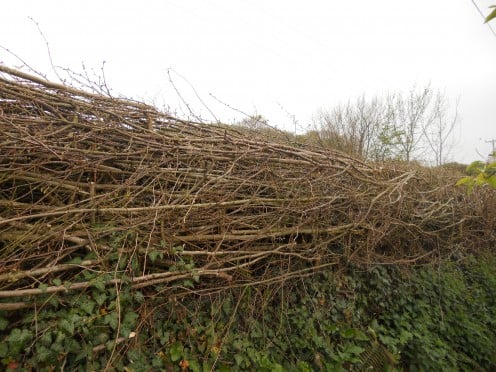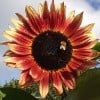The Hedgerows of Britain: native flora and fauna of traditional British hedgerows
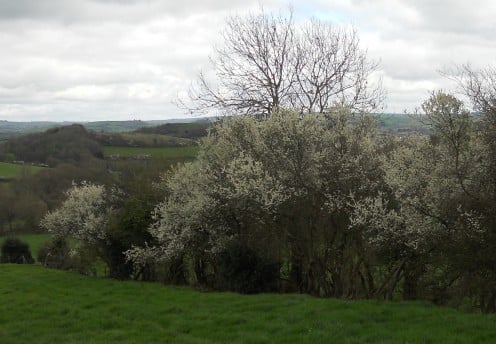
The hedgerows of Britain form a distinctive part of its agricultural landscape. Some hedgerows were planted a very long time ago - probably centuries ago - by farmers, in order to enclose their fields and form boundaries between plots of land.
Older hedgerows are very biodiverse, being made up of a great variety of native and ancient plants and providing a unique ecosystem for wildlife, as well as being "green corridors" that spread across the countryside in a large network, so that animals can shelter and move from one area to another in relative safety.
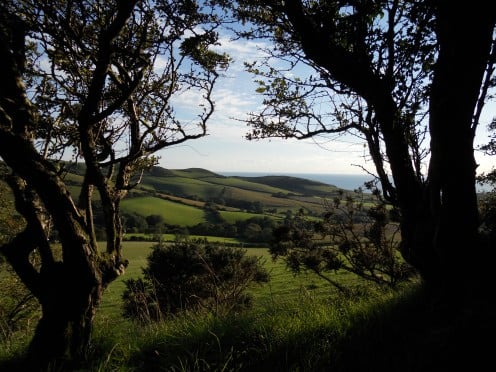

Flora
Hedgerows are made up predominantly of trees and shrubs along with climbing plants and an understorey of low growing plants. They were probably planted originally with a single species of native shrub, but over the years other plants have colonised and become a natural wild addition. The age of a hedgerow can be roughly determined by counting the number of shrub species - for each different species that is found in a 30 yard stretch you can assume the hedgerow to be another 100 years old.
Many hedgerows contain prickly bushes, such as hawthorn, blackthorn and holly. These plants provide good defensive boundaries, suitable for containing livestock - and for keeping out unwanted visitors or predators. Blackthorn has very pretty white blossom in the spring {see top picture), and hawthorn is covered with pale pink or white "May" blossom in the month of May. Elder, field maple and hazel trees, as well as some larger trees like ash and elm are also commonly seen in hedgerows.
Climbing plants are often found growing up through the branches, and include the sweet scented honeysuckle, ivy, dog roses and wild clematis, all adding a splash of colour with their flowers and berries.
The plants of the understorey depend largely on local conditions and type of habitat. Grasses and cow parsley are common, and woodland plants such as primroses, wild garlic, nettles and ferns all seem to thrive at the foot of the hedge.
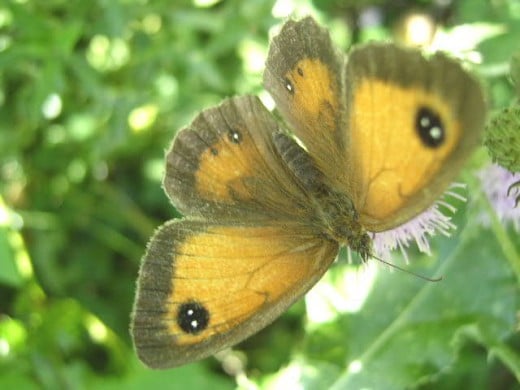
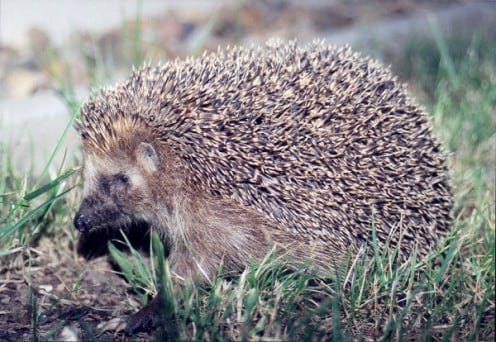
Fauna
Hedgerows provide both food and shelter for a number of animals, most notably birds, insects and small mammals. They are a valuable habitat for these creatures, which is in danger of being lost, especially on farmland when land is cleared and field sizes increased for large-scale crop production. The RSPB claim that "Hedges may support up to 80% of our woodland birds, 50% of our mammals and 30% of our butterflies."
Some species found here are given away by their names - the hedge sparrow, the hedge brown butterfly and of course the hedgehog!
Hedgerows are a haven for many birds that nest in the safety of the thick shrubs as well as being provided with a great food source of insects and berries. All sorts of woodland and garden species make use of this great habitat, such as sparrows, tits, finches, blackbirds, robins and wrens.
Small mammals such as mice often build their nests in hedgerows. The dormouse, which is a rare and protected species in Britain, has a very specialised habit. They particularly like to make their nests in hazel tree hedgerows, where they have a good food source from the hazelnuts, and often use honeysuckle vines to build their nests, where they hibernate for up to six months each year. A properly laid hazel hedge (see below) provides the perfect habitat for the dormouse.
Hedge Laying
Many British hedges are still traditionally "laid", a method of controlling growth and shaping the hedge by cutting part way through branches and bending them down to form a kind of natural living fence. If done properly this can look very beautiful, it is also the best way to maintain the hedging, filling the gaps to make it stock-proof, and is much better for wildlife than the modern method of flailing with machinery. Hedge-laying is considered a traditional countryside skill, it needs to be done by hand and is quite labour intensive. It is an art that was once in danger of dying out due to cheaper modern methods, but there are now hedge-laying societies, courses and competitions in many parts of the country that aim to keep this craft alive.
